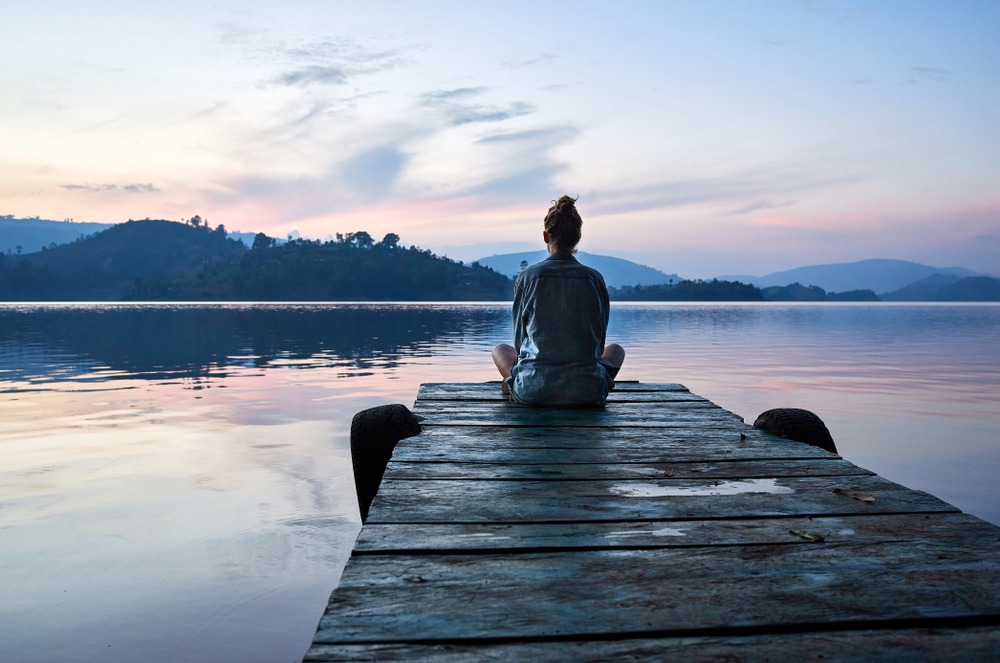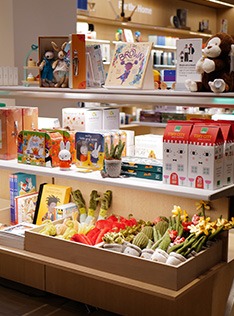Your event triage crib sheet
That dizzy feeling in the pit of your stomach. It is real and it isn’t just you. For meeting professionals, 2023 was a blurred “Fast & Furious” chase scene of a year. We put the pedal to the metal and, in some cases, white-knuckled events through sheer grit. With lean teams and possibly an assist from an AI app, we managed the myriad details (did you know the first Fast & Furious movie included no fewer than 15,000 sound effects? The average conference probably rivals that number of to-do list items) required to fill a convention center with enthusiastic, well-caffeinated attendees to deliver life-changing messages before they grab their swag bags and make for the open bar.
After a year of covering the twists and turns required to manage 0 to 60 events, our editors compared notes to come up with our annual list of the 25-course corrections no one saw coming and tips about how to manage the G-forces involved in the sudden accelerations and detours.
What “objects-in-road” are you seeing and how are you navigating the uneven conditions? Email us editor@smartmeetings.com and you could be name-checked in our next highlight reel.
25. Ombré Travel
Three years ago, we were all talking about “bleisure,” demand from our attendees to offer room block rates for the few days before and after an event so they can blend business and leisure travel. Then we got sick of that portmanteau and started calling it “mullet travel,” business in the front and a party in the back just because it made us giggle. A recent Global Business Travel Association (GBTA) poll found that two in five travel managers reported an increase in employees prioritizing “blended travel.” Sticking with the coiffure metaphor, ombré travel may be more appropriate for 2024 as the fun and work parts of the journey flow into one another like a highlight that is never completely one thing or the other.
To Do: Call it out of the shadows. Ask attendees if they will be bringing family and need child care or would like to extend their stay. Accommodating their personal needs could increase attendance and attention.
24. Indigenous Land Acknowledgment
More than 56 million acres make up Indian Country, an area that combined would be about the size of Great Britain according to the American Indian Alaska Native Tourism Association. Much of North America was once home to First People who lived lightly on the land. Acknowledging that history is a way to show respect.
To Do: Start by recognizing the complicated past of the destination where you are meeting with something like the following. “I would like to begin by acknowledging that we are in ___________, the ancestral and unceded territory of the ________ People who stewarded this land throughout the generations.
23. Calm-cations

Campspot, a platform dedicated to redefining the art of camping, recently released a survey that found roughing-it is out and peaceful getaways are in. Whether you call that glamping, distressed-chic or quaint, groups like the idea of a retreat in a secluded lodge as long as they can still get Wi-Fi and Uber Eats delivered. Meeting at the shore doesn’t have to be all flip-flops and sand in the laptop. Luxury beach meetings with cabanas, beverage service and a side of environmental activism can elevate time at a watery destination.
To Do: Source dark-sky venues, waterfront locations (what Campspot calls “waterlust wellness” and resort-like campground scenarios for the win. Talk to your partners from San Diego’s Hotel Del Coronado and Alabama’s Gulf Shores & Orange Beach Tourism to Visit Atlantic City, The Palm Beaches, Florida and Bermuda Tourism Authority about possibilities for inspiring and relaxing.
22. DIY Sourcing
Let’s say it. The RFP process is broken. Hotels don’t have enough staff to answer the deluge of generic inquiries coming into their inboxes and planners aren’t getting responses in a timely manner.
To Do: Some simple meetings are turning to online booking programs like Groups360 to instantly book space, order F&B and even create a room block with access to real-time data that would put an Expedia booker to shame. Have you tried it yet?
21. Democratization of Motivation
Incentive programs aren’t just for salespeople any more. As companies struggle to recruit, retain and motivate everyone from operators to data engineers, rewarding extraordinary performance is a job for a meeting professional. Bonus: Incentive travel can bring remote employees and leadership together in a relaxed environment where they can better understand big-picture goals.
To Do: The traditional golf outing may not be the thing that these new audiences value. Don’t guess what they will want. Ask them. “Have a conversation, find out what they value, because there’s room within our incentives to operate in a couple of different ways, and give people different paths to deliver the experience they want,” said Stephanie Harris, president of Incentive Research Foundation.
20. Crisis Hospitality
As wars and natural disasters have broken out across the world, the hospitality industry has stepped up as it always does to provide shelter for refugees, journalists, soldiers and dignitaries—despite some challenging operational conditions.
To Do: This is a good time to reach out to your industry partners, make sure they are OK, ask if they know anyone impacted and how you can help. When the time is right, consider planning in the impacted region again with a robust Corporate Social Responsibility (CSR) component as hospitality can be a powerful force for healing when managed sensitively.
19. For Good
Corporate mission statements are expanding to embed charity, sustainability and equity goals in a holistic approach to leaving behind a better world. Often referred to as Environment, Social and Governance (ESG) these initiatives are as much about aligning business practices with employee and client values as they are about giving money to a cause. Denise Naguib, vice president of sustainability and supplier diversity with Marriott International, explained it this way: “Providing inclusive guest experiences is a competitive advantage in every market that we serve.”
To Do: The secret to effective CSR and ESG is authenticity. If you do it for the press release, the initiative won’t be nourished by the beating heart of an advocate. Take the time to understand what you and your group cares about and then start with baby steps that can grow into trees of giving and healing.
18. Buycott Rather Than Boycott

Meeting professionals are often collateral damage in the culture wars tearing our country apart. A state legislature passes a law some see as discriminating against a class of people and suddenly you are being attacked for the meeting you booked and contracted two years ago in a city that doesn’t event align with the state’s views on the subject.
To Do: Instead of boycotting the state, breaking your contract and canceling the event, consider what SocialOffset founder Elena Gerstmann calls buycotting. By supporting nonprofits in the area that support your cause—LGBTQ+ or minority or women’s health advocates—you show attendees that you understand their concerns and are engaging to make a real difference and a statement in a way that your absence can’t.
17. Don’t Imbibe; Vibe

Just because a meeting has a critical business purpose doesn’t mean it can’t be filled with joy.
Jacques W. Martiquet, The Party Scientist, has seen the devastating consequences drinking to reduce inhibitions can have on people and instead advocates for activating dopamine and serotonin by helping attendees feel that they belong.
Listen to the What One Thing? podcast with Martiquet here.
To Do: Substitute interactions for passive presentations. Get attendees standing up, talking to each other, moving in unison, in short, “vibing.” Their nervous systems and behaviors will thank you for taking a chance.
16. Smoke vs. Shots
A new generation of attendee and shifting drug laws are making the scent of burning marijuana leaves a more prevalent guest as young people are passing on alcohol for health reasons and passing the joint, according to Brian Applegarth, founder of the California Cannabis Tourism Association.
To Do: Read up on the legal status and rules at your venue before you go to ensure you know what is allowed and expected.
15. Cookieflation

Inflation continued to hit event budgets right in the lunch line with overall inflation rising an average of 4.9% in May of 23, down from a high of 9.1% in June of 22, according to the U.S. Bureau of Labor Statistics, but still a compounding problem for budgets. The bad news is that one of the food items now at a premium is cookies, which went up 15.9% between April 2022 and April 2023. The same trend is evident in its component parts—margarine is up 23.8%, eggs up 21.4% and flour up 17.8%.
To Do: The good news is that bacon and frankfurter sausages were down more than 2%. Perhaps we start planning savory snacks instead of sweet ones.
14. Strike Risk
Related to the inflation challenge is a resurgence in unions voting to go on strike at popular meeting destinations, including Las Vegas and Los Angeles. Again, world events are putting meeting professionals in a challenging position of canceling and incurring charges from hotel or asking attendees to cross picket lines.
To Do: Like IMEX Group CEO Carina Bauer, planners have to be aware of contracts coming up for negotiations, stay in regular contact with the venue and destination and communicate with potential attendees about their comfort levels.
13. Embrace the Gifting Lounge
 Stop inundating attendees with swag bags full of pens and water bottles. It is not sustainable and doesn’t show that you care or understand the recipient.
Stop inundating attendees with swag bags full of pens and water bottles. It is not sustainable and doesn’t show that you care or understand the recipient.
To Do: Instead, open a gifting lounge with locally sourced, thoughtful items displayed so attendees can go shopping and grab the items that call to their hearts, taking only what they will use and leaving the rest for someone else.
12. Sparkly Kicks
The trend that started last year with the emergence of tennis shoes paired with suits and dresses all over the IMEX trade show floor was elevated to another level this year. As attendees clocked record steps during the largest IMEX America ever in Las Vegas, branded cushioned shoes were the foundation for the long days.
To Do: Consider gifting shoes fitted specifically for attendee feet. Companies like Road Runner Sports can bring their experts and equipment for a custom fitting everyone will appreciate.
11. Net Zero Targets

Meetings are no place for waste. Companies (including Smart Meetings) and venues are pledging to eliminate greenhouse gas emissions by 2050 with 50% reductions by 2030. That means scrutinizing F&B processes and choices, supply chain practices and swag giveaways for environmental impact.
To Do: Sustainability is a team sport. Work with local partners to find charities to donate leftover ingredients and materials to while sourcing green venues that are advancing clean energy goals as part of their operations.
10. Light the Skies

It’s time to ditch the money-burning fireworks in favor of an ahhh-inspiring light show that is pet-friendly, environmentally sensitive and endlessly creative. Drone shows are taking over the skies in cities across the country.
To Do: Go Drone Shows has been rolling with Smart Meetings for over a year. Now that the company has merged with Skyworx Drone Shows, to expand access to programmed propeller-driven lights, the sky is the limit to what we can create.
9. Big B Belonging
 In the shorthand for diversity, equity and inclusion (DEI) initiatives that often fall under environmental, social and governance (ESG) umbrellas at corporations, “Belonging” with a capital “B” has risen to the top as a goal everyone ultimately wants as an outcome.
In the shorthand for diversity, equity and inclusion (DEI) initiatives that often fall under environmental, social and governance (ESG) umbrellas at corporations, “Belonging” with a capital “B” has risen to the top as a goal everyone ultimately wants as an outcome.
To Do: Groups such as Tourism Diversity Matters, Events Industry Council and National Coalition of Black Meeting Professionals are bringing industry leaders together to strategize ways to eliminate barriers, and create fair treatment, access and advancement for all. Get involved to contribute your perspective and learn from others.
8. Truly Inclusive
It is time to stop ignoring people just because they interact or process information differently. The important work being led by Megan Henshall, Google strategic solution lead, Smart Women in Meetings Visionary Award winner, mother of a newly diagnosed autistic son and the first-mover behind Google Experience Institute (Xi) Days was a powerful demonstration of the strategies that will appeal to all types of attendees, including the half of the population that identifies as introverted and everyone on the neurodiversity continuum.
To Do: Meet people where they are by respecting different learning styles. Guiding Principles in Experience Design, a report outlining six truths that draw on the core behavioral urges that drive human beings published by Marriott International in partnership with PCMA and CEMA is a good starting point.
7. Perennials

Instead of designing events to appeal to the age group you are trying to attract, how about using data to understand the behaviors and motivations of your attendees, rather than making assumptions based on Gen Z and Baby Boomer click-bait articles.
To Do: Dahlia El Gazzar, CEO of Dahlia+ Agency had this advice, “Cut the sh*t on designing for a mindset instead of a demographic.” David Peckinpaugh, CEO of Maritz, agreed. “Events have to speak to the individual’s personal goals and objectives, not their age.” So ask them. Survey attendees to find out what they want from an event and then design to that.
6. Gate Fatigue

For 71% of planners, rising airfare costs are still affecting the destinations chosen for meetings and events according to a Global DMC Partners Q2/Q3 Meetings & Events Pulse Survey. Lack of flights or reliability, particularly for connections is impacting attendance and agendas and when events can start and stop.
To Do: Direct flight lift has to rise in the priority consideration list even as planners are looking to second-tier cities for cost savings. Bringing people in a day early for bonus activities adds to the cost but can also boost engagement and peace of mind. A return to travel agents and flight insurance could help when hiccups do happen.
5. Home-style Fitness

Now that bragging about how #IMEXhausted you are after a conference is passe, we have to find a way to help attendees stay on their diet and exercise programs while they are traveling. Return on Wellness podcast host David T. Stevens has seen the demand from attendees and it is only growing.
To Do: The best way to help people finish strong is to be intentional about incorporating movement in agendas beyond publicizing the hours of the gym. Offering a “fun-k” walk-run, stretching in the afternoon and healthy meal options is a step in the right direction. Ixnaying mandatory late nights helps, too.
4. Zenerstitials

Incorporating transitional recentering activities during meetings or “Zenerstitials” as Mindful Moments founder Charlotte Frederick calls them, helps attendees overcome the stimulation overload, focus and remember more.
To Do: Call on a facilitator to lead 3-minute breathing, gratitude and mindfulness exercises between speakers or sessions for a more relaxed outcome.
3. Authentic Intelligence
If you believe the hype, AI is both the savior and the ultimate threat to the meetings industry and the world at large. Nick Borelli, director of marketing with Zenus, proposed that the ability to call on the collective content of the world to do menial tasks could mean salvation for overworked meeting professionals. The trick will be finding the balance between the benefits and the privacy risks.
To Do: Borelli suggests having the tough conversations with your attorney now about emerging legislation around how to protect health data, including who has what nut allergy.
2. Journey to Meaning
Event technology company Encore’s Break Free experience at IMEX was an extension of the company’s commitment to demonstrating how to immerse attendees in content to make it more meaningful.
To Do: Graphic storytelling, surrounding video, sound and scent combined with a compelling message about using the power of empathy to design more accommodating events added an interactive step by asking attendees to sign a wall pledging to design gatherings everyone could enjoy.
1. Normalizing Mental Health Conversations
 The emotional state of our attendees, teams and ourselves is now something we are talking about—a lot. After Covid, groups such as Event Minds Matter and Evolution Hospitality are advocating discussions about how people are feeling as a way to normalize asking for help when needed. Former Olympians, doctors and planners are flooding speaking bureaus to talk about the importance of “seeing someone.”
The emotional state of our attendees, teams and ourselves is now something we are talking about—a lot. After Covid, groups such as Event Minds Matter and Evolution Hospitality are advocating discussions about how people are feeling as a way to normalize asking for help when needed. Former Olympians, doctors and planners are flooding speaking bureaus to talk about the importance of “seeing someone.”
To Do: Start with yourself. Are you making time for proper sleep and nutrition even when you are on the road? Working yourself ragged is no longer a badge of honor. Taking time to make yourself whole so you can show up for your teams refreshed and focused is the new overtime.
This article appears in the November 2023 issue. You can subscribe to the magazine here.




